Designing a Tulip Garden
Creating a stunning tulip garden is like painting a vibrant masterpiece with nature as your canvas. This article explores the essential elements of crafting a beautiful tulip garden, from the initial planning stages to the final touches of maintenance. Imagine stepping into a world bursting with color, where the delicate petals of tulips sway gently in the breeze, inviting you to stop and admire their beauty. With the right approach, you can transform your outdoor space into a breathtaking display of blooms that will leave your neighbors in awe.
First things first, let’s talk about planning. Just like a chef carefully selects ingredients for a gourmet meal, you need to choose the right tulip varieties that will thrive in your garden. There are countless options available, each with unique characteristics that can complement your garden's overall aesthetic. From the classic red and yellow varieties to the more exotic fringed and parrot tulips, your selection will set the tone for your garden’s atmosphere.
Once you’ve chosen your tulip varieties, it’s time to think about the layout of your garden. A well-thought-out design maximizes both space and beauty. Consider how colors will interact; a harmonious blend can create a soothing effect, while contrasting colors can add a dramatic flair. Additionally, pay attention to height. Taller tulips can serve as a backdrop for shorter varieties, creating depth and visual interest. It's like arranging a bouquet where every flower has its place and purpose.
Now, let’s dive deeper into some critical considerations for your tulip garden. Understanding your garden's sunlight exposure and soil quality is vital for ensuring your tulips thrive. Tulips generally prefer full sun, so assess how much light your garden receives throughout the day. Are there any shady spots that might hinder their growth? Knowing the sunlight conditions will help you select the best tulip varieties for your space.
Moreover, soil preparation can significantly impact the health of your tulips. Testing your soil for pH and nutrient levels is a smart move. Tulips prefer well-drained soil, rich in organic matter, so consider amending your soil with compost or well-rotted manure to provide the nutrients they need. A little effort in preparation goes a long way in ensuring a flourishing garden.
When it comes to planting, the techniques you employ can make a world of difference. Properly planting tulip bulbs at the right depth and spacing can lead to a stunning bloom display. Remember, tulips should be planted about 6 to 8 inches deep and spaced around 4 to 6 inches apart. This allows each bulb enough room to grow and flourish, much like giving each child the space to grow into their own unique selves.
Finally, let’s not forget about watering and fertilization. Establishing an effective watering routine is key to maintaining the right soil moisture. Tulips prefer a consistent moisture level, especially during their growing season. Aim to water them once a week, ensuring the soil is moist but not soggy. Overwatering can lead to bulb rot, while underwatering can stunt their growth. Finding that sweet spot is essential for a vibrant tulip garden.
Choosing the right fertilizer can also make a significant difference in the health and vibrancy of your tulips. A balanced fertilizer, applied in early spring, can boost growth and encourage those stunning blooms. Look for fertilizers that are high in potassium and phosphorus, as these nutrients support root development and flowering. Following the manufacturer's instructions on application will help you achieve the best results.
- When is the best time to plant tulips? Tulips are typically planted in the fall, about 6 to 8 weeks before the ground freezes.
- How long do tulips bloom? Tulip blooms generally last for about 1 to 2 weeks, depending on the variety and weather conditions.
- Can tulips grow in partial shade? While tulips prefer full sun, some varieties can tolerate partial shade, but this may affect their blooming.
- How often should I fertilize my tulips? Fertilize your tulips once in early spring, and you can apply a second round after they finish blooming.

Choosing the Right Tulip Varieties
When it comes to creating a stunning tulip garden, one of the most important decisions you'll make is . With hundreds of options available, it can be overwhelming to decide which ones will bring your garden to life. Each tulip variety has its own unique characteristics, blooming times, and colors, making it essential to do your homework before planting.
First off, let’s talk about the major types of tulips. There are several classifications, but the most popular ones include:
- Darwin Hybrid Tulips: Known for their large blooms and sturdy stems, these tulips are perfect for gardens that experience wind or rain.
- Triumph Tulips: A cross between early and late tulips, they offer a wide range of colors and are great for mid-spring displays.
- Parrot Tulips: With their fringed and feather-like petals, these tulips add a touch of exotic flair to any garden.
- Fringed Tulips: These have a unique, jagged edge to their petals, providing an interesting texture and look.
Each of these varieties can create a different atmosphere in your garden. For instance, if you’re looking for a bold statement, consider planting a mix of Darwin Hybrid and Parrot tulips. On the other hand, if you prefer a more subtle, elegant look, Triumph and Fringed tulips might be your best bet.
Another crucial factor to consider is the color palette. Tulips come in almost every color imaginable, so think about how you want your garden to feel. Do you want a vibrant, lively garden bursting with reds, yellows, and pinks? Or perhaps a more serene space with whites, blues, and purples? Mixing and matching colors can create a stunning visual effect, but be cautious—too many contrasting colors can lead to a chaotic appearance.
Additionally, consider the height of the tulips. Some varieties grow taller than others, so it's wise to plant shorter tulips in front and taller ones in the back. This not only enhances visibility but also creates a layered look that can add depth to your garden. For example, you might place the elegant Triumph tulips at the forefront, with the towering Darwin hybrids behind them, allowing each variety to shine.
Lastly, think about the blooming season. Tulips can be classified into early, mid, and late bloomers. To enjoy tulips for a longer period, consider planting a mix of early and late varieties. This way, you can kick off the spring with vibrant colors and enjoy a continuous display until late spring. By carefully selecting a variety of tulips, you will not only ensure a beautiful garden but also a dynamic one that evolves throughout the season.
In summary, choosing the right tulip varieties involves considering their type, color, height, and blooming time. By taking the time to plan and select wisely, you’ll set the stage for a truly breathtaking tulip garden that will be the envy of your neighborhood.
Q: What is the best time to plant tulips?
A: The ideal time to plant tulips is in the fall, about 6-8 weeks before the ground freezes. This allows the bulbs to establish roots before winter.
Q: How many tulip bulbs should I plant?
A: It depends on your garden size and layout, but a good rule of thumb is to plant in clusters of at least 5-7 bulbs for a more natural look.
Q: Can tulips grow in shaded areas?
A: While tulips prefer full sun, some varieties can tolerate partial shade. However, for the best blooms, aim for at least 6 hours of sunlight a day.
Q: How do I care for my tulips after they bloom?
A: After blooming, allow the foliage to die back naturally. This helps the bulbs store energy for the next growing season. Avoid cutting the leaves until they turn yellow.
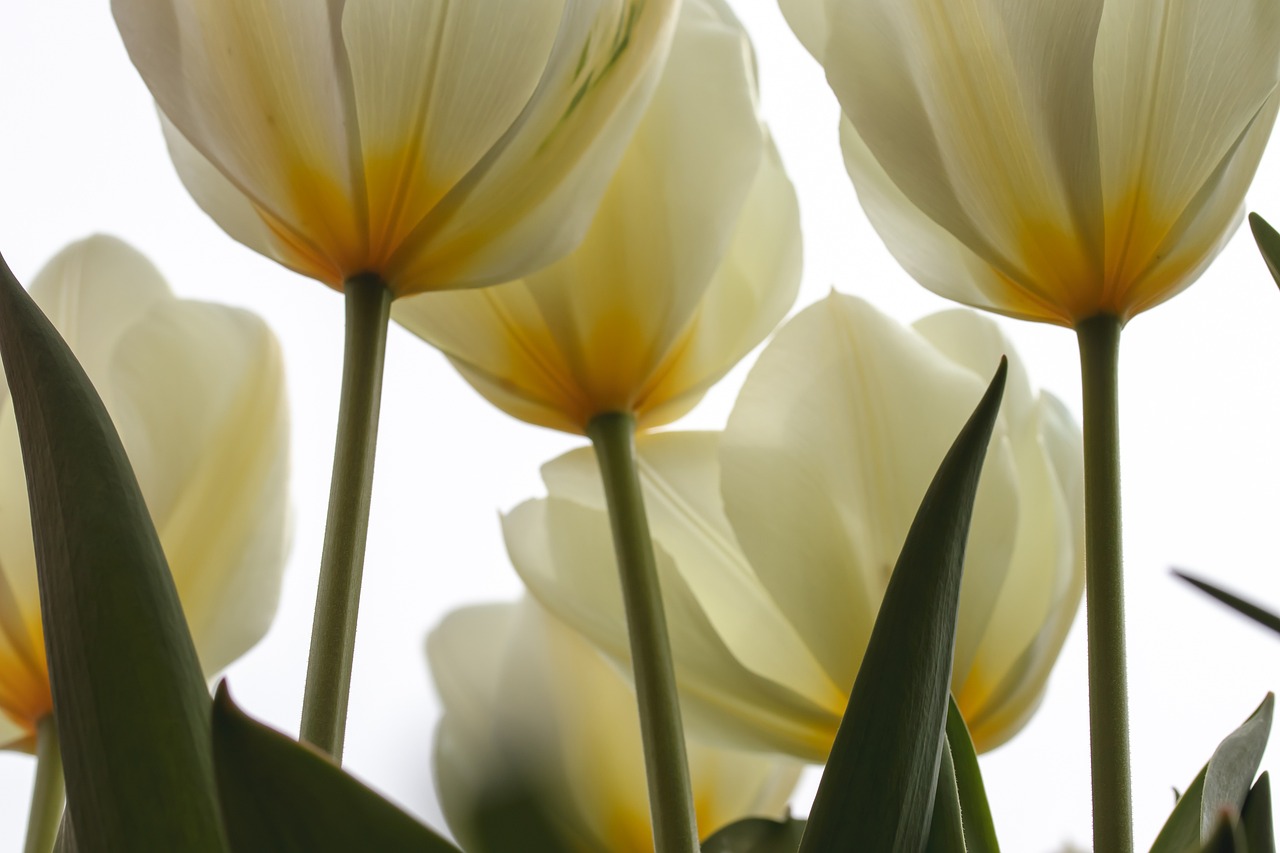
Planning Your Garden Layout
When it comes to designing a tulip garden, planning your layout is as important as selecting the right tulip varieties. Imagine walking through a vibrant sea of colors, where each tulip stands proudly, showcasing its unique beauty. To achieve this, you need to consider a few essential design principles that will help you maximize both space and aesthetic appeal. The first step is to think about color coordination. Just like an artist chooses the perfect palette for a masterpiece, you should select tulip colors that complement each other. For instance, pairing warm colors like reds and yellows with cooler shades such as blues and purples can create a stunning visual contrast that draws the eye.
Next, consider the height of the tulips you plan to plant. Taller varieties should be placed at the back of your garden beds or in the center of circular layouts, while shorter ones can be positioned at the front. This layering technique not only enhances visibility but also creates a sense of depth in your garden. To help you visualize this, here’s a simple table that outlines some popular tulip varieties along with their heights:
| Tulip Variety | Height (inches) | Color |
|---|---|---|
| Darwin Hybrid | 18-24 | Red, Yellow, Pink |
| Triumph | 12-18 | White, Purple, Red |
| Parrot Tulips | 12-18 | Multi-colored |
| Fosteriana | 12-18 | Yellow, Orange |
Moreover, it’s essential to think about the overall shape of your garden. Whether you prefer a traditional rectangular layout or a more whimsical circular design, the shape can greatly influence how your tulips are perceived. A curved path leading through your tulip garden can create a sense of flow, inviting visitors to meander through the blooms and appreciate their beauty up close.
Don't forget about the seasonal changes in your garden. As the tulips bloom in spring, consider how their colors will look against the backdrop of emerging foliage. Planting tulips alongside perennials that bloom later in the season can provide continuous interest and beauty. For example, pairing tulips with peonies or daylilies can create a stunning transition from spring to summer.
Finally, remember to leave adequate space between each bulb. Crowded tulips may compete for nutrients and sunlight, which can lead to a less vibrant display. A spacing of about 4 to 6 inches is generally recommended, depending on the variety. This will not only allow each tulip to thrive but also create a lush, full appearance as they bloom.
In summary, a well-planned garden layout can transform your tulip garden into a breathtaking spectacle. By considering color coordination, height, shape, and spacing, you can create a vibrant and inviting space that showcases the beauty of tulips in all their glory. So grab your sketchpad, start planning, and get ready to dig into an adventure that will reward you with stunning blooms!
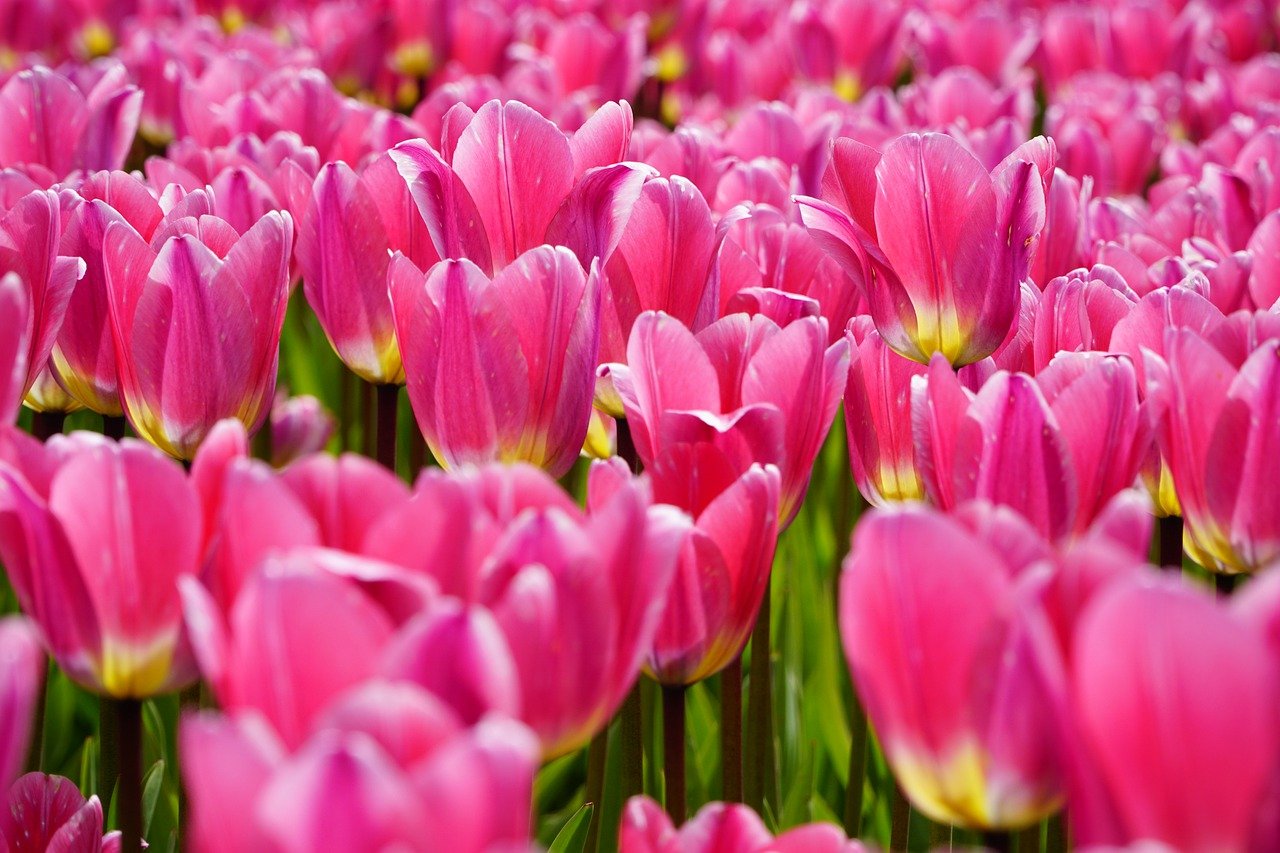
Considerations for Sunlight and Soil
When it comes to designing a stunning tulip garden, understanding sunlight and soil conditions is paramount. Think of your tulips as the stars of a grand performance; they need the right stage to shine their brightest. The first step in ensuring your tulips flourish is to assess how much sunlight your garden receives throughout the day. Most tulip varieties thrive in full sun, which means they need at least 6 hours of direct sunlight daily. If your garden is shaded by trees or nearby structures, you might need to consider varieties that can tolerate partial shade. However, keep in mind that too much shade can lead to weak stems and fewer blooms.
Next, let’s talk about soil—a tulip's foundation. Healthy soil is like a nourishing meal for your plants. To get started, conduct a soil test to determine its pH level and nutrient content. Tulips prefer a slightly acidic to neutral soil pH, ideally between 6.0 and 7.0. If your soil is too acidic or alkaline, you can amend it by adding lime to raise the pH or sulfur to lower it. Additionally, tulips thrive in well-draining soil that is rich in organic matter. Consider incorporating compost or well-rotted manure to enhance soil fertility and improve drainage.
To summarize, here are key factors to consider:
- Sunlight: Aim for at least 6 hours of direct sunlight.
- Soil pH: Maintain a pH between 6.0 and 7.0.
- Drainage: Ensure your soil drains well to prevent bulb rot.
- Organic Matter: Enrich your soil with compost to boost nutrients.
By paying close attention to these factors, you’ll set the stage for a breathtaking display of tulips that will not only catch the eye but also bring joy and vibrancy to your garden. Remember, the right conditions can transform your tulip garden from ordinary to extraordinary, making it a beautiful oasis for you and your visitors to enjoy.
Q: How much sunlight do tulips need?
A: Tulips generally need at least 6 hours of direct sunlight each day for optimal growth.
Q: What type of soil is best for tulips?
A: Tulips prefer well-draining soil that is rich in organic matter with a pH level between 6.0 and 7.0.
Q: Can tulips grow in partial shade?
A: While some tulip varieties can tolerate partial shade, they will perform better in full sun.
Q: How often should I water my tulips?
A: Water your tulips regularly, ensuring the soil remains moist but not waterlogged, especially during dry spells.
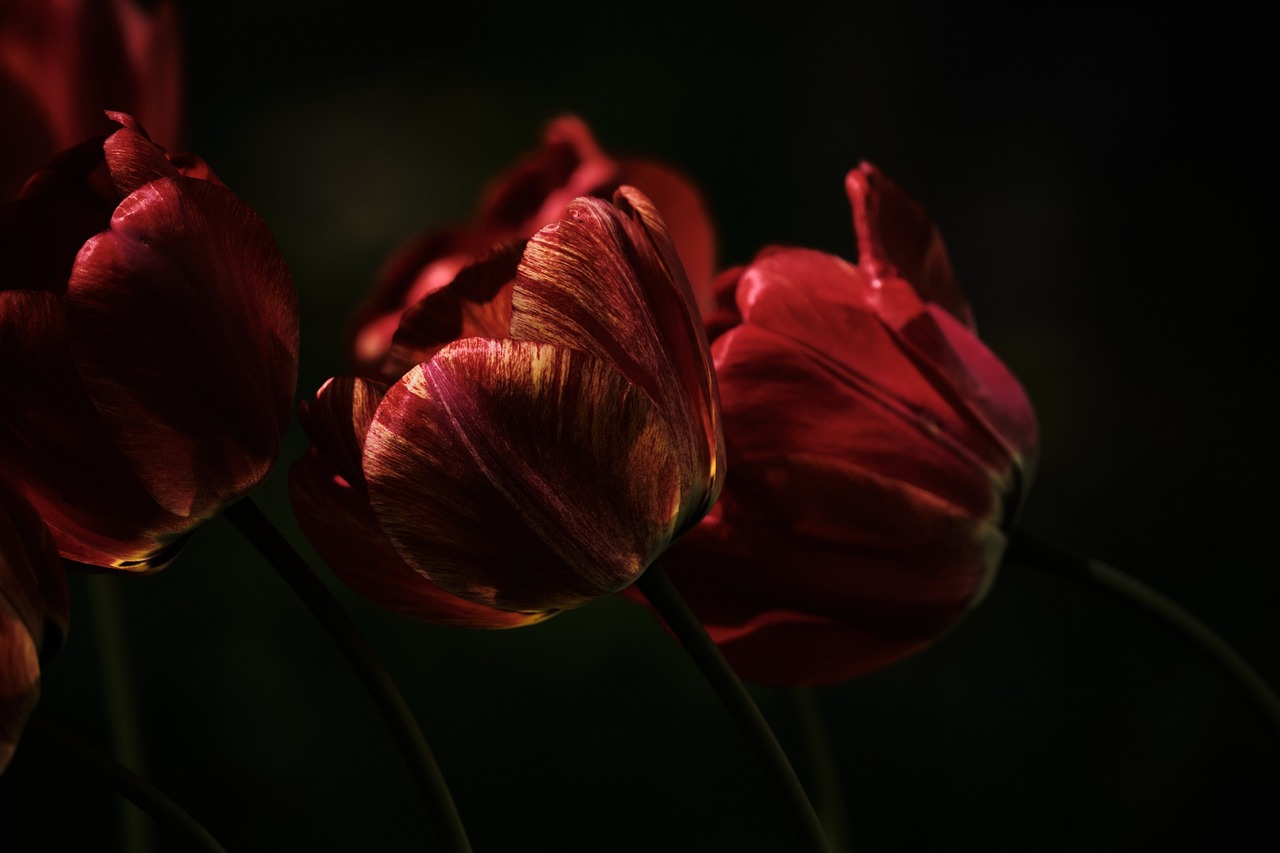
Sunlight Requirements for Tulips
When it comes to growing tulips, sunlight is a vital ingredient in the recipe for success. These vibrant flowers are not just pretty faces; they thrive in specific light conditions that can make or break your garden's aesthetic. Generally, tulips prefer full sun, which means they need at least 6 hours of direct sunlight each day. This exposure is crucial for promoting healthy growth and ensuring those stunning blooms that we all love.
But what does "full sun" really mean for your garden? If your garden is shaded by trees or buildings for a significant part of the day, you might want to reconsider your tulip placement. Think of your tulips as sunbathers; they need that golden sunlight to soak up the energy they require to flourish. If they’re stuck in the shade, they may become leggy, produce fewer flowers, or even fail to bloom altogether. It’s like trying to enjoy a beach day under an umbrella—no fun at all!
Here’s a quick breakdown of the sunlight needs for different tulip varieties:
| Tulip Variety | Sunlight Requirement |
|---|---|
| Darwin Hybrid | Full Sun |
| Triumph Tulips | Full Sun to Partial Shade |
| Parrot Tulips | Full Sun |
| Fringed Tulips | Full Sun |
As you plan your garden, take note of how the sunlight moves across your space throughout the day. It’s like watching a dance; the sun rises in the east and sets in the west, and your tulips want to be front and center. If you have areas that receive morning sun but are shaded in the afternoon, consider planting tulips that can tolerate partial shade, like Triumph Tulips. They’ll still put on a show, even if they don’t get to bask in the sun all day long.
In summary, to achieve a stunning tulip display, ensure your garden beds receive ample sunlight. Monitor your garden’s light conditions and choose your tulip varieties accordingly. The right amount of sun will not only enhance the colors of your tulips but also extend their blooming period, allowing you to enjoy their beauty for weeks. Remember, a little bit of sun can go a long way in creating the garden of your dreams!
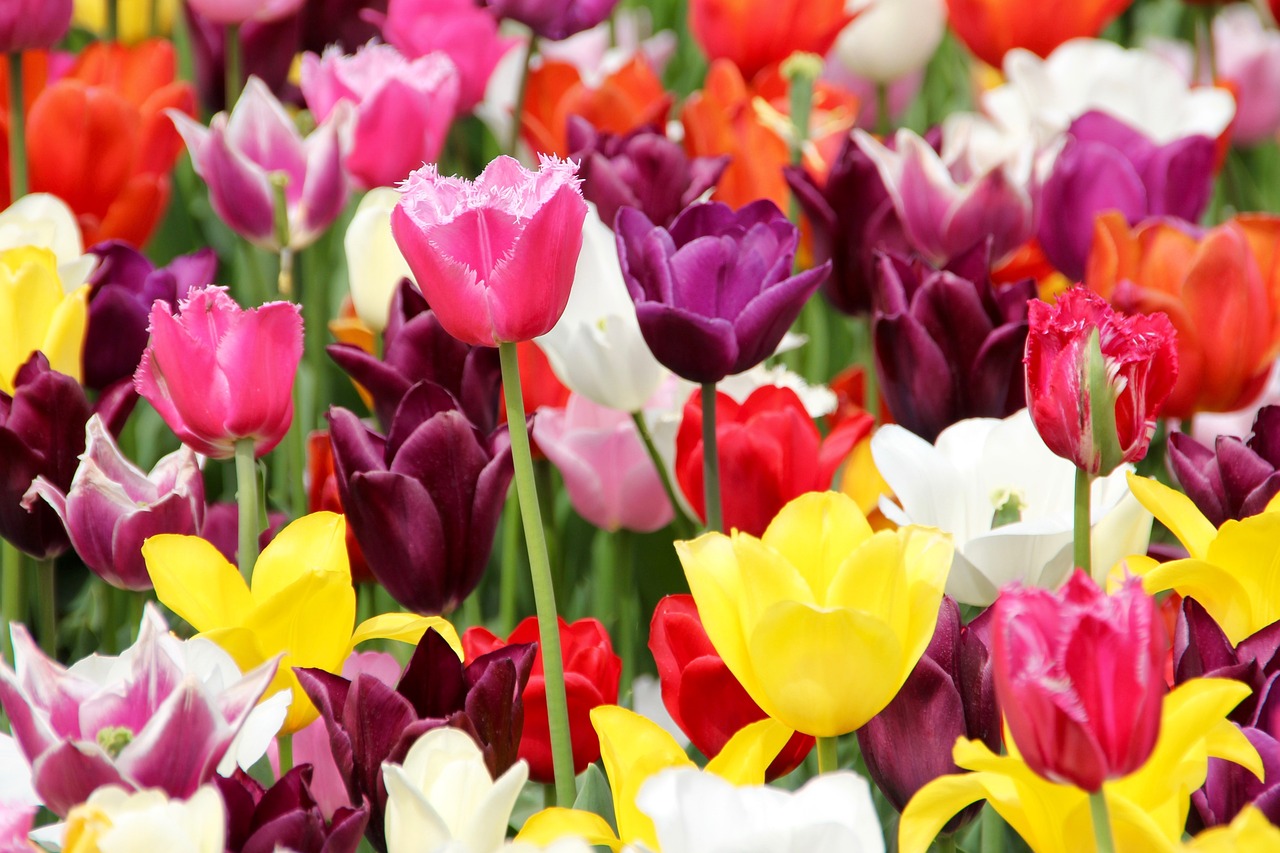
Soil Preparation Techniques
When it comes to creating a stunning tulip garden, soil preparation is one of the most critical steps you can take. Think of your garden soil as the foundation of a house; without a solid base, everything else can crumble. Before you even think about planting those beautiful tulip bulbs, you need to ensure that the soil is not only suitable but also enriched to promote healthy growth. Start by conducting a soil test to determine its pH level and nutrient content. Most tulips thrive in slightly acidic to neutral soil, with a pH of around 6.0 to 7.0. If your soil is too acidic or alkaline, you can amend it accordingly with lime or sulfur.
Next, consider the texture of your soil. Tulips prefer well-draining soil to prevent waterlogging, which can lead to bulb rot. If your garden has heavy clay soil, you might want to mix in organic matter such as compost or well-rotted manure. This not only improves drainage but also adds essential nutrients that tulips crave. Aim for a mixture that retains some moisture while still allowing excess water to flow away. A good rule of thumb is to aim for a soil composition that is about 30% organic matter, which can be achieved by adding materials like peat moss, leaf mold, or compost.
Once you've tested and amended your soil, it’s time to till it. Tilling helps to aerate the soil and mix in the amendments you've added. Use a garden fork or a tiller to turn the soil to a depth of about 12 inches. This will not only improve soil structure but also help in breaking up any compacted areas that can hinder root growth. After tilling, rake the soil to create a smooth, level surface. If you have a large area, consider using a landscape fabric to suppress weeds, which can compete with your tulips for nutrients and water.
Finally, it's essential to water your soil after preparation. This helps to settle the soil and ensures that the amendments are well integrated. A good watering can also help you identify any drainage issues before planting your tulips. Remember, the goal here is to create a welcoming environment for your tulips, so take your time with these preparation steps. By investing effort into your soil now, you’ll be rewarded with a vibrant display of tulips that will brighten your garden and your spirits.
- How often should I test my soil? It's a good idea to test your soil every 2-3 years to keep track of its nutrient levels and pH balance.
- What type of fertilizer should I use for tulips? A balanced fertilizer with equal parts nitrogen, phosphorus, and potassium is ideal, but you can also opt for a bulb-specific fertilizer.
- Can I plant tulips in clay soil? Yes, but be sure to amend it with organic matter to improve drainage and nutrient content.
- When is the best time to prepare the soil for tulips? Ideally, you should start preparing your soil in the fall before planting, or in early spring if you’re planting in the spring.
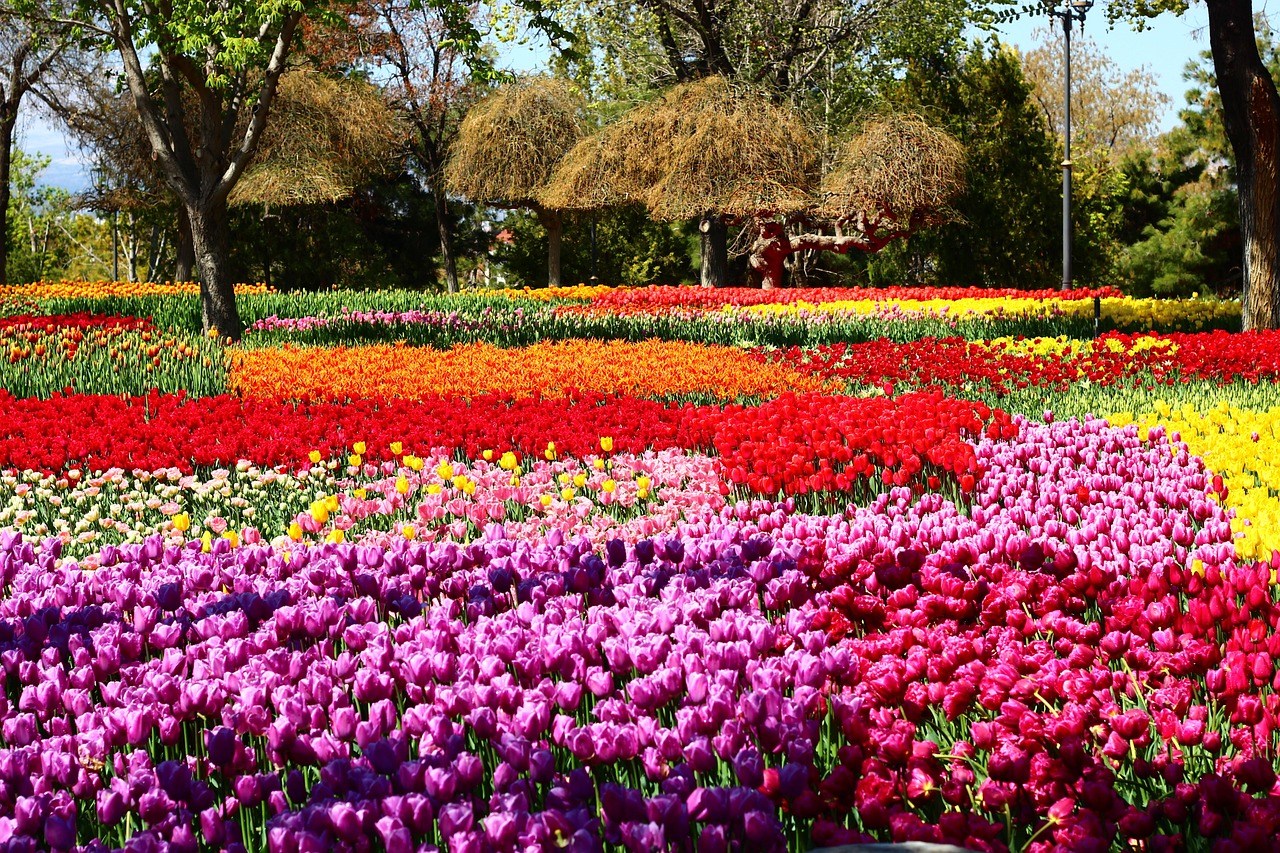
Planting Techniques for Success
When it comes to planting tulips, the right techniques can make all the difference between a garden that flourishes and one that falls flat. First and foremost, you need to consider the timing of your planting. Ideally, tulip bulbs should be planted in the fall, about six to eight weeks before the ground freezes. This gives the bulbs ample time to establish roots before winter sets in. Imagine tucking your tulips in for a cozy winter nap, only to wake up in the spring with a burst of color!
Next, let’s talk about the actual planting process. Start by selecting a well-draining location; tulips despise soggy soil. If your garden has heavy clay, consider amending it with compost or sand to improve drainage. When you're ready to plant, dig holes that are about three times the height of the bulb. For most tulip varieties, this means digging around 6 to 8 inches deep. Place the bulbs in the holes with the pointed end facing up, and cover them gently with soil. Think of this step as tucking in a child at bedtime—make sure they’re snug but not too tight!
Once your bulbs are in the ground, it's essential to water them lightly. This helps to settle the soil around the bulbs and provides them with the moisture they need to get started. However, be careful not to overwater; too much moisture can lead to rot. A good rule of thumb is to keep the soil slightly moist but not soggy. You can always check the moisture level by sticking your finger into the soil—if it feels dry an inch down, it’s time for a drink!
In addition to these techniques, spacing is crucial. Plant your tulips about 4 to 6 inches apart to allow them room to grow and spread. If you’re feeling adventurous, consider planting them in clusters or drifts for a more natural look. This method mimics how tulips grow in the wild, creating a stunning visual effect that can take your garden from ordinary to extraordinary.
Finally, after planting, it’s important to mark the spots where you’ve planted your bulbs. This can help you remember where they are once the snow melts and the ground thaws. You can use garden markers, stones, or even a simple drawing of your layout. Keeping track of your tulips will ensure you don’t accidentally dig them up while preparing your garden for spring!
- When is the best time to plant tulip bulbs? The best time to plant tulip bulbs is in the fall, about six to eight weeks before the first frost.
- How deep should I plant tulip bulbs? Plant tulip bulbs about 6 to 8 inches deep, with the pointed end facing up.
- What type of soil is best for tulips? Tulips prefer well-draining soil. If your soil is heavy clay, consider amending it with compost or sand.
- How often should I water my tulips? Water your tulips lightly after planting and keep the soil slightly moist but not soggy.
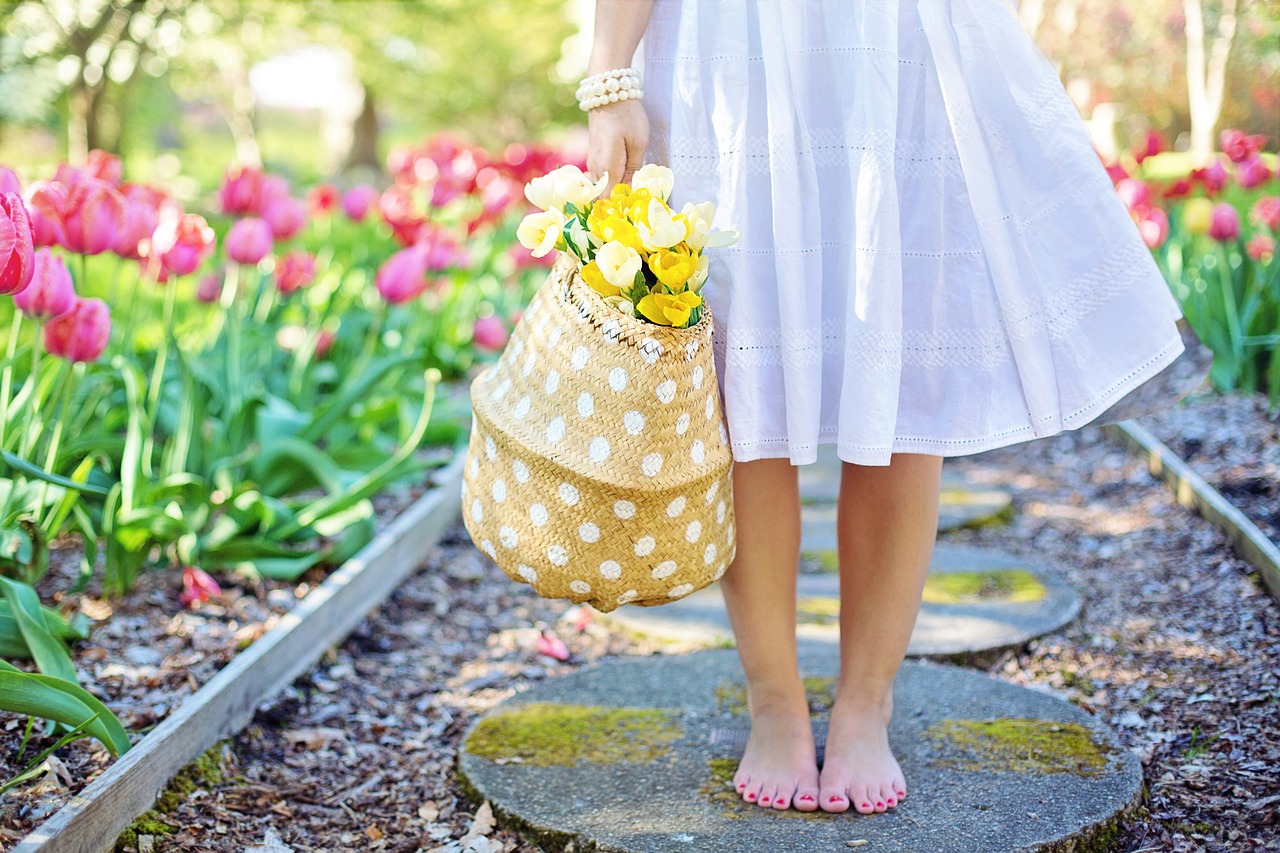
Watering and Fertilization Tips
When it comes to cultivating a stunning tulip garden, watering and fertilization are two key elements that can make or break your floral masterpiece. Think of watering as the lifeblood of your tulips; without it, even the most beautiful bulbs will wither away. But how do you strike the right balance? It's not just about pouring water on them and hoping for the best! You need to establish a routine that considers the specific needs of your plants.
First off, let’s talk about watering frequency. Tulips thrive in well-drained soil, which means they don’t like to sit in waterlogged conditions. A good rule of thumb is to water them deeply once a week, especially during dry spells. However, during the blooming period, you might want to increase this to twice a week. The goal is to keep the soil consistently moist but not soggy. If you’re unsure, just stick your finger into the soil. If it feels dry about an inch deep, it’s time to give your tulips a drink!
Now, let’s dive into fertilization. Tulips are not particularly heavy feeders, but they do appreciate a little boost. When planting your bulbs, it’s beneficial to mix in a slow-release fertilizer into the soil. This will provide essential nutrients as your tulips grow. After they bloom, you can apply a balanced fertilizer, such as a 10-10-10 mix, to encourage healthy foliage and prepare the plants for next season.
Here’s a quick look at some fertilizer options:
| Type of Fertilizer | Application Timing | Benefits |
|---|---|---|
| Slow-Release Fertilizer | At planting | Provides nutrients over time |
| Balanced Fertilizer (10-10-10) | After blooming | Encourages healthy growth |
| Bone Meal | At planting | Rich in phosphorus for strong roots |
When applying fertilizers, remember that less is more. Over-fertilizing can lead to lush green leaves at the expense of blooms. You want to strike that perfect balance where your tulips can flourish without becoming overly dependent on chemical nutrients. Always follow the manufacturer’s instructions regarding the amount and frequency of application.
Lastly, don’t forget about the seasonal changes. As the weather warms, your tulips will need more water, while in cooler months, you might need to cut back. Keeping an eye on the weather forecasts and adjusting your watering schedule accordingly will help you maintain a vibrant tulip garden throughout the season.
- How often should I water my tulips?
Water your tulips deeply once a week, increasing to twice a week during dry spells. - What type of fertilizer is best for tulips?
A balanced fertilizer like 10-10-10 is ideal after blooming, while a slow-release fertilizer can be mixed into the soil at planting. - Can I over-fertilize my tulips?
Yes, over-fertilizing can lead to excessive leaf growth at the expense of blooms. Always follow recommended guidelines.
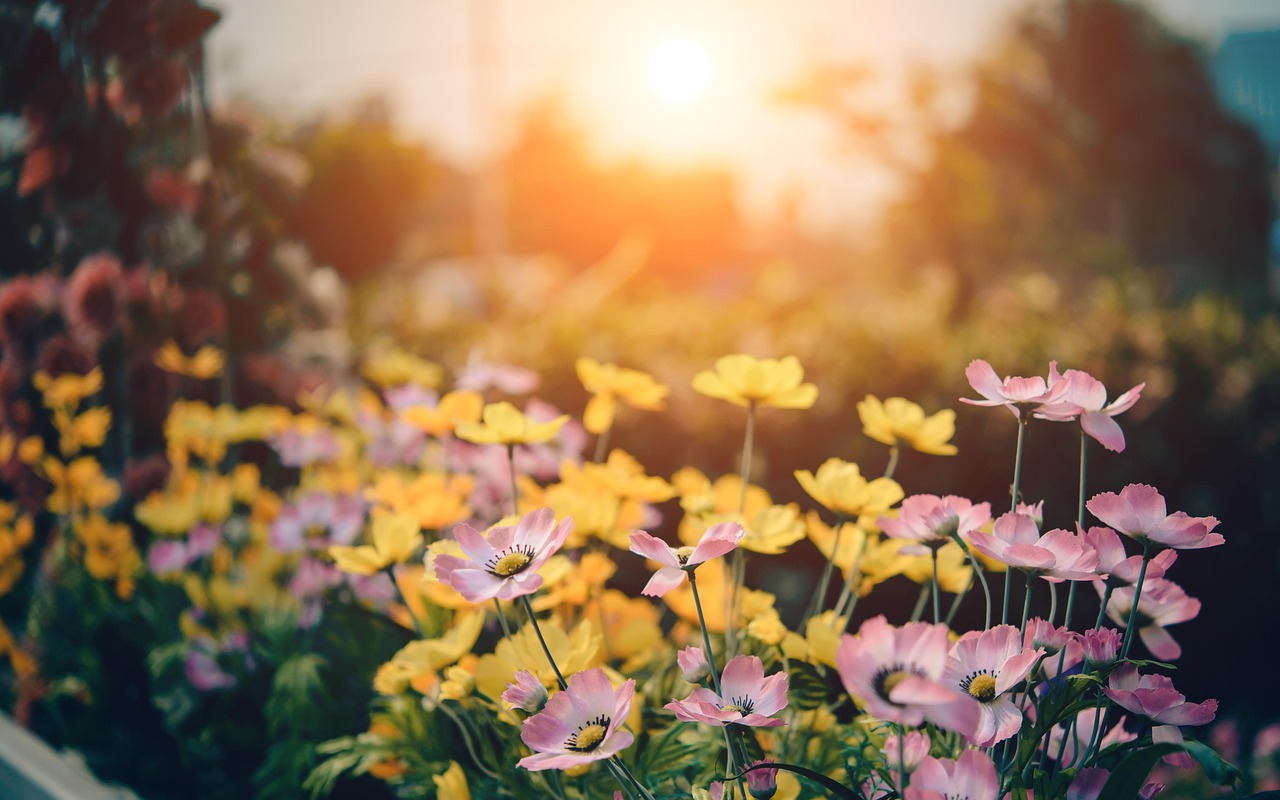
Establishing a Watering Schedule
Creating a consistent watering schedule for your tulip garden is essential for maintaining soil moisture and ensuring your flowers thrive. Tulips, while hardy, require a careful balance of water to flourish. So, how do you establish this schedule? First, consider the climate of your area. Are you in a region that experiences hot summers or cold, wet winters? Understanding your local weather conditions will help you tailor your watering routine to meet your tulips' specific needs.
Generally, tulips need about 1 inch of water per week, either from rainfall or supplemental watering. However, during particularly dry spells, you might need to increase this amount. A good rule of thumb is to check the soil moisture by sticking your finger about an inch into the soil. If it feels dry, it's time to water. This simple test ensures that you’re not over or under-watering your plants, which can lead to issues such as bulb rot or stunted growth.
To help visualize your watering schedule, consider the following table that outlines a basic watering routine:
| Day | Watering Amount | Notes |
|---|---|---|
| Monday | 1 inch | Check soil moisture before watering. |
| Wednesday | 1 inch | Adjust based on weather conditions. |
| Friday | 1 inch | Ensure evening watering to prevent evaporation. |
In addition to your watering days, consider the time of day you water. Early morning is the best time, as it allows the water to soak into the soil before the heat of the day causes evaporation. Watering in the evening can also work, but be cautious as it may leave the foliage damp overnight, potentially leading to fungal diseases.
Lastly, remember the importance of adjusting your watering schedule based on the growth stage of your tulips. During the early stages of growth, when the bulbs are establishing roots, they may require more frequent watering. As the tulips mature, you can gradually reduce the frequency while maintaining the same total amount of water. This gradual adjustment helps your tulips develop a robust root system, which is crucial for their overall health.
- How often should I water my tulips? Generally, tulips need about 1 inch of water per week, but this can vary based on weather conditions.
- Is it better to water in the morning or evening? Early morning is the best time to water tulips to minimize evaporation and fungal issues.
- What should I do if my tulips are wilting? Check the soil moisture; if it’s dry, increase your watering frequency.
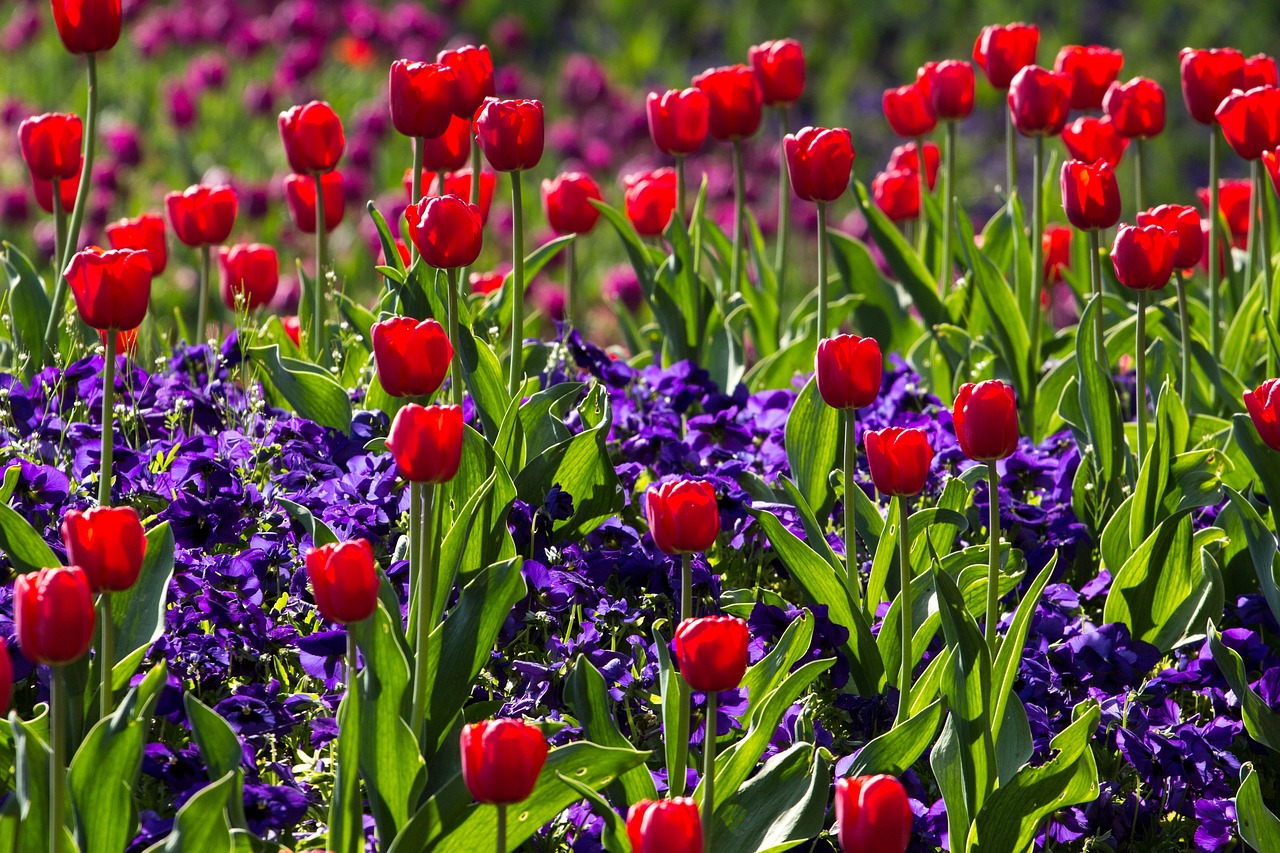
Choosing the Right Fertilizer
When it comes to nurturing your tulip garden, selecting the right fertilizer is like choosing the perfect seasoning for a gourmet dish. Just as a dash of salt can elevate flavors, the right nutrients can enhance the vibrancy and health of your tulips. But how do you know which fertilizer is best suited for your blooming beauties? Let's dive into the essential aspects of fertilizing tulips to ensure they flourish.
First off, it's important to understand that tulips thrive on a balanced diet of nutrients. The primary nutrients that tulips need are nitrogen (N), phosphorus (P), and potassium (K). These nutrients are typically found in most fertilizers, but the ratio in which they are combined can significantly impact your tulips' growth. A good starting point is to look for a fertilizer with a N-P-K ratio of 5-10-10. This ratio provides ample phosphorus, which is crucial for root development and blooming. In contrast, too much nitrogen can lead to lush foliage at the expense of flowers, which is not what we want!
To further enhance your tulip garden, consider using organic fertilizers. These are derived from natural sources and can improve soil health over time. Some popular organic options include:
- Bone Meal: Rich in phosphorus, this organic fertilizer helps promote strong root systems and vibrant blooms.
- Compost: A well-balanced compost can provide a slow release of nutrients while improving soil structure.
- Fish Emulsion: This liquid fertilizer is high in nitrogen and can be beneficial during the early growth stages.
Applying fertilizer at the right time is equally important. For tulips, the ideal time to fertilize is in the early spring, just as the shoots begin to emerge. This timing allows the plants to absorb the nutrients as they start their growth cycle. You can apply a granular fertilizer by scattering it around the base of the plants, ensuring you follow the manufacturer's instructions for the recommended amount. If you prefer liquid fertilizers, dilute them according to the guidelines and apply them directly to the soil.
Another key tip is to avoid over-fertilizing. Just like too much salt can ruin a dish, excessive fertilizer can harm your tulips. Over-fertilization can lead to nutrient burn, which manifests as brown tips on the leaves and stunted growth. Always err on the side of caution and if in doubt, do a soil test to determine existing nutrient levels before applying any additional fertilizers.
In summary, choosing the right fertilizer involves understanding the specific needs of your tulips, selecting a balanced N-P-K ratio, considering organic options, timing your application appropriately, and avoiding over-fertilization. By paying attention to these factors, you'll be well on your way to cultivating a stunning tulip garden that bursts with color and vitality.
Q: How often should I fertilize my tulips?
A: Generally, fertilizing once in early spring is sufficient. However, if your soil is particularly poor, you may consider a second application after blooming has finished.
Q: Can I use leftover fertilizer from last year?
A: Yes, as long as the fertilizer is stored properly and hasn't clumped or degraded, it can still be effective. Just check the expiration date and follow the recommended application rates.
Q: Is it necessary to use fertilizer for tulips?
A: While it's not strictly necessary, using fertilizer can significantly enhance the growth and blooming potential of your tulips, especially in nutrient-poor soils.
Frequently Asked Questions
-
What are the best tulip varieties for beginners?
If you're just starting out, consider planting Darwin Hybrid tulips. They are resilient, bloom beautifully, and are known for their vibrant colors. Other great choices include Triumph and Single Early tulips, which are also easy to grow and maintain.
-
How do I plan the layout of my tulip garden?
Planning your garden layout is all about maximizing both beauty and space. Start by sketching your garden area and consider factors like color coordination and height of the tulips. Place taller varieties at the back and shorter ones in the front for a stunning visual effect!
-
How much sunlight do tulips need?
Tulips generally thrive in full sun, which means they need at least 6 hours of direct sunlight daily. However, some varieties can tolerate partial shade. Assess your garden's light conditions before planting to ensure your tulips get the right amount of sun!
-
What type of soil is best for tulips?
Tulips prefer well-draining soil that is rich in organic matter. Conduct a soil test to check the pH and nutrient levels, and consider adding compost or peat moss to improve soil structure. This will help your tulips grow strong and healthy!
-
When is the best time to plant tulip bulbs?
The ideal time to plant tulip bulbs is in the fall, about 6 to 8 weeks before the ground freezes. This allows the bulbs to establish roots before winter sets in, leading to a beautiful bloom in spring!
-
How often should I water my tulips?
Establishing a consistent watering schedule is crucial. Generally, tulips need about 1 inch of water per week, either from rainfall or irrigation. Be careful not to overwater, as soggy soil can lead to bulb rot!
-
What fertilizer should I use for tulips?
Using a balanced fertilizer with equal parts nitrogen, phosphorus, and potassium is ideal. Look for a product labeled specifically for flowering bulbs. Apply it in early spring when the tulips start to grow for the best results!
-
Can I grow tulips in containers?
Absolutely! Tulips can thrive in containers as long as the pots have good drainage. Choose a large enough pot to allow for root growth and fill it with quality potting soil. Just remember to water them regularly and provide adequate sunlight!



















